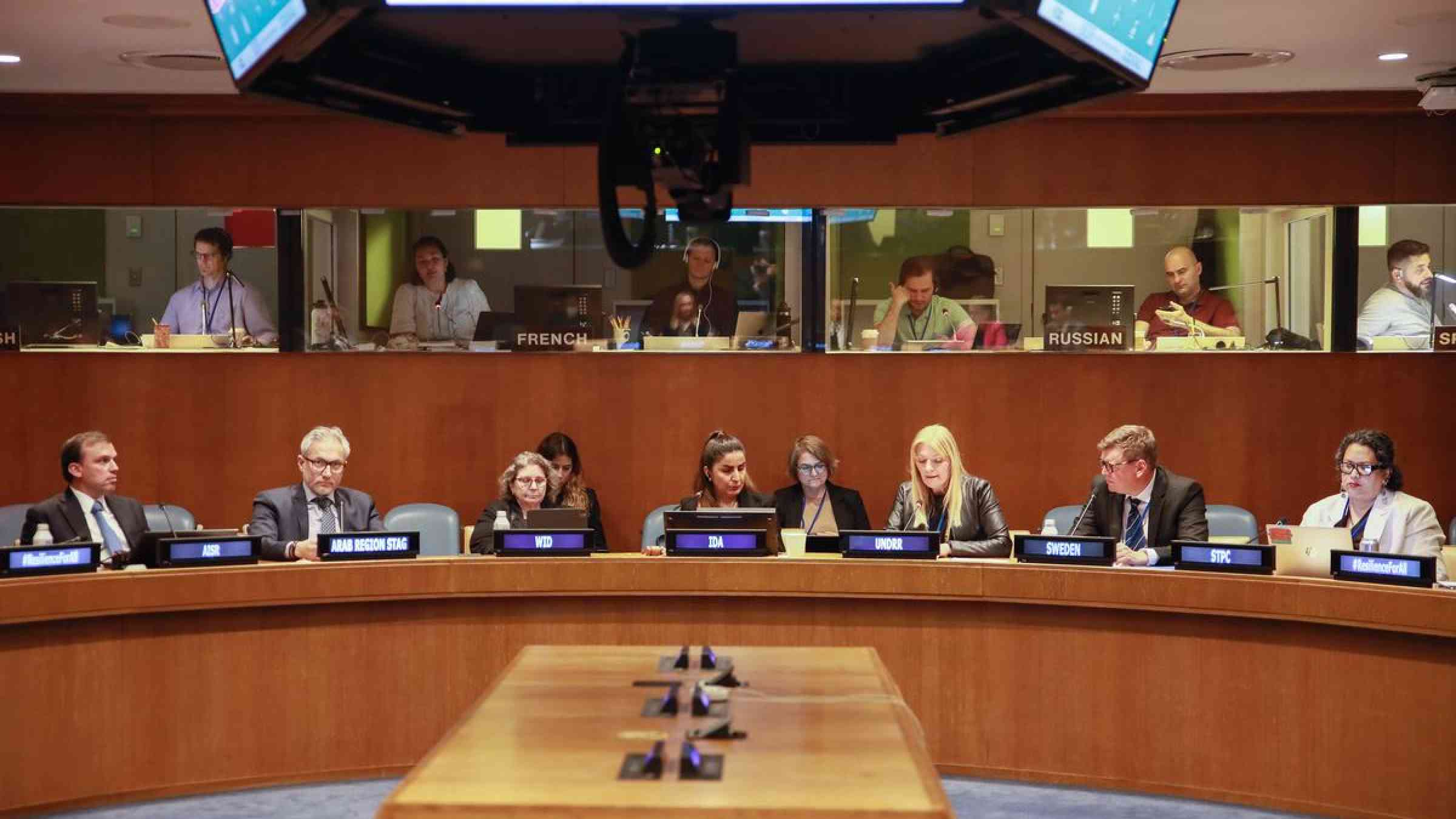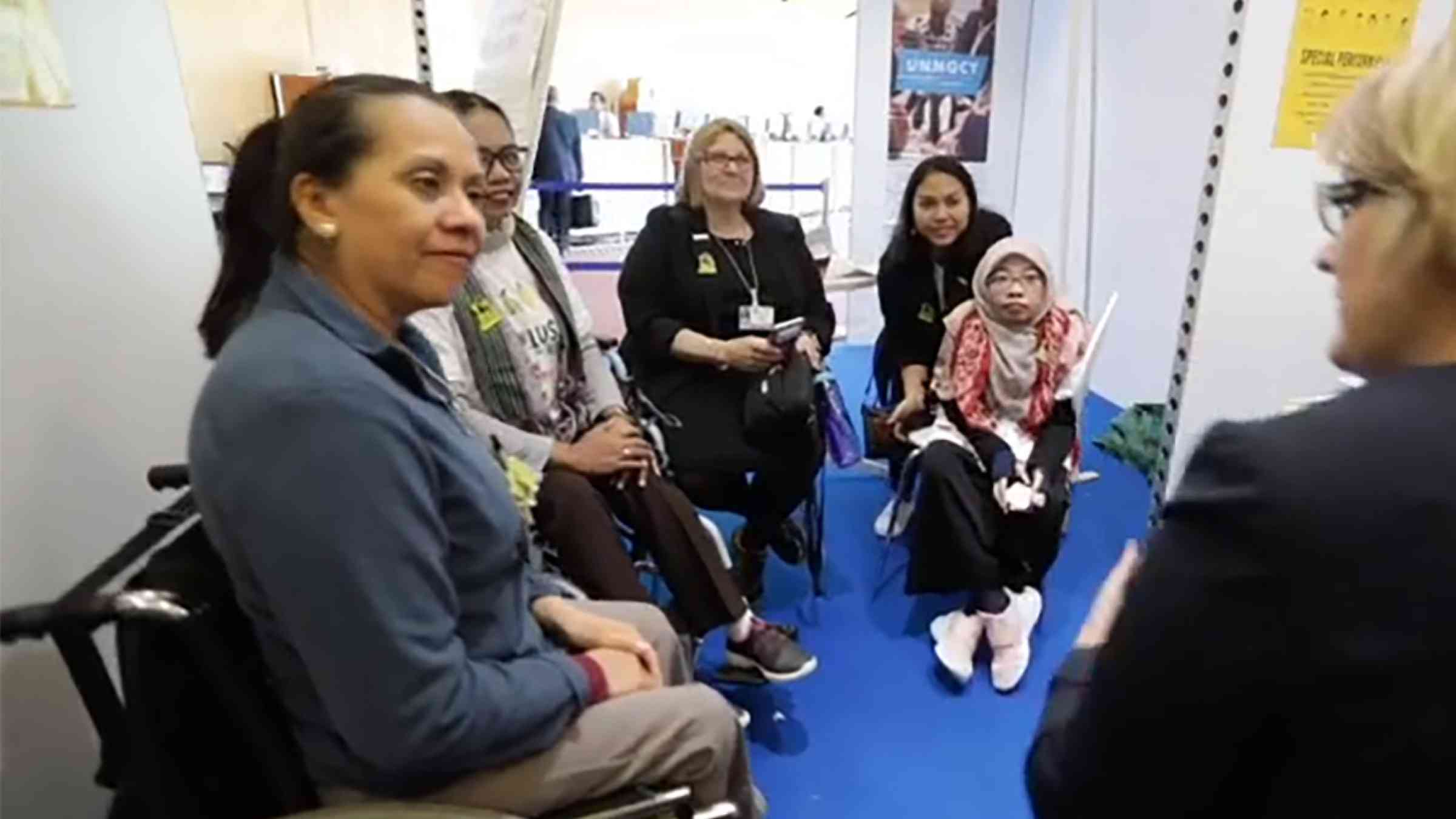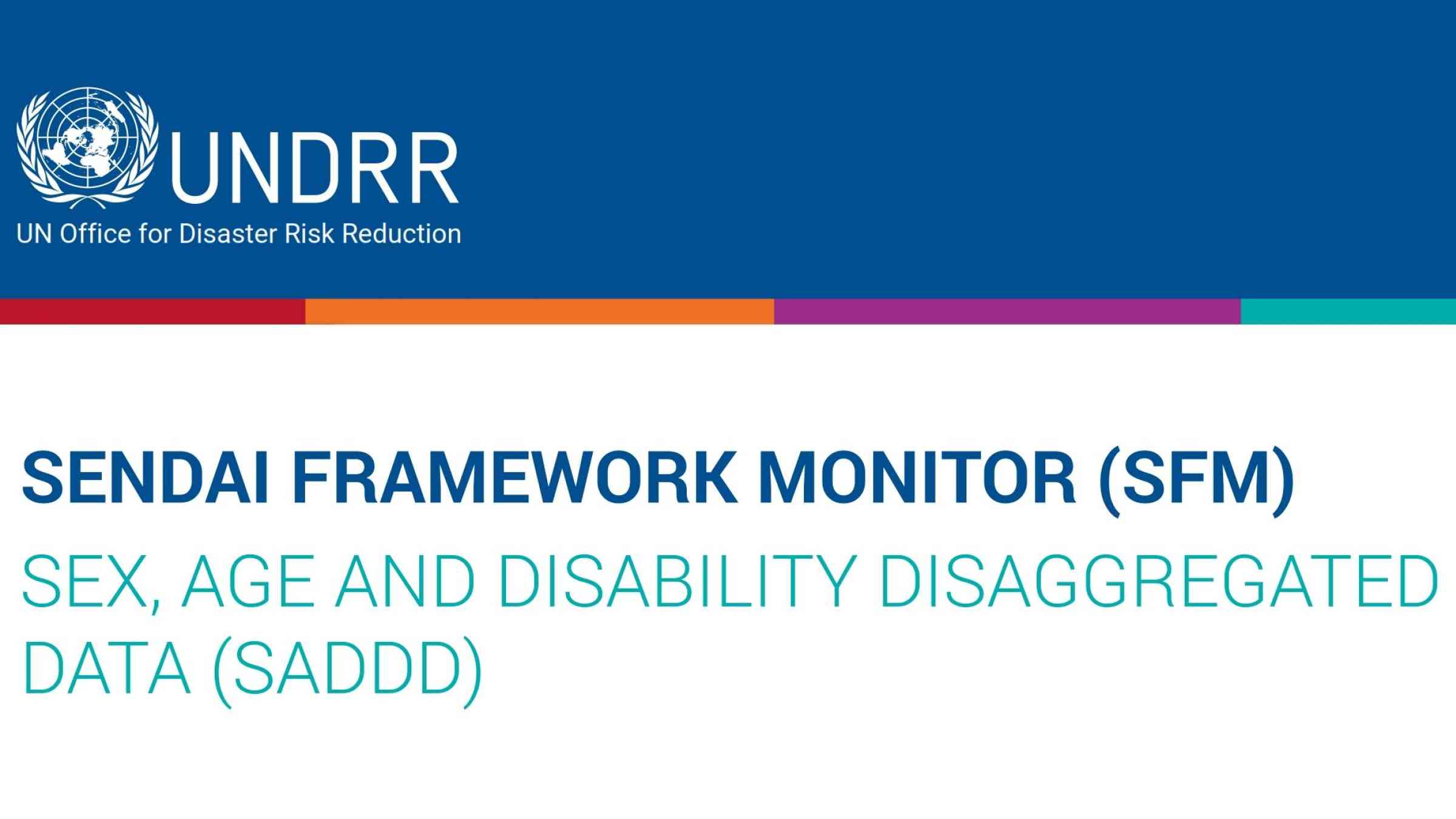2023 Global Survey on Persons with Disabilities and Disasters
The world must act on unacceptable failures to protect persons with disabilities from disasters
Persons with disabilities constitute 16% of the world's population, with 80% living in the Global South. They are frequently the most affected by natural hazards, climate-induced disasters, and global health emergencies.
To understand the progress made in disability inclusion in DRR, the UN Office for Disaster Risk Reduction (UNDRR) conducted the 2023 Global Survey on Persons with Disabilities and Disasters as a follow-up to the 2013 Global Survey.
The results show limited progress in disability inclusion over the past 10 years, with no significant differences across the regions.
Highlights and interactives from the report can be read below, or the full report can be downloaded.
“Disasters impact everyone but have a disproportionate impact on persons with disabilities who continue to experience barriers to participation and societal exclusion. The Sendai Framework for Disaster Risk Reduction 2015-2030 commits to increase the participation of persons with disabilities in disaster risk reduction (DRR) and champions inclusive decision-making in which persons with disabilities are key stakeholders in determining the DRR plans and programmes that impact all our lives.”
SRSG Mami Mizutori
The Survey
The Sendai Framework for Disaster Risk Reduction 2015-2030 recognizes persons with disabilities as contributing stakeholders, emphasizing the need for inclusion in all DRR policies and practices.
To understand the progress made in disability inclusion in DRR, the UN Office for Disaster Risk Reduction (UNDRR) conducted the 2023 Global Survey on Persons with Disabilities and Disasters as a follow-up to the 2013 Global Survey. The survey aimed to identify if persons with disabilities are prepared for potential disasters, whether early warning and risk information is available and accessible, if persons with disabilities are aware of DRR plans at national and local levels, and if persons with disabilities are participating in DRR decision-making and planning.
The survey was conducted between January and March 2023 and resulted in a total of 6,342 responses from 132 countries. For comparison, the 2013 survey resulted in 5,717 responses from 137 countries.
The results show limited progress in disability inclusion over the past 10 years, with no significant differences across the regions.
Keep reading for highlights from the report, or:
On this page
- Key results
- Personal preparedness plans
- Ability to evacuate
- Disaster information in accessible formats
- Awareness of DRR plans
- DRR plans to address specific needs of persons with disabilities
- Participation in local-level decisions
- Mechanisms to ensure participation in community decisions
- Leadership roles for disability inclusion
- Displacement
- Five priorities for disability inclusion in DRR
- Recommendations to accelerate progress
- Overview of survey respondents
- Download options
- How UNDRR supports disability inclusion in disaster risk reduction

Key results
1. Personal preparedness plans
“As a person with a disability, I pay […] attention to disasters or epidemics. […] I have set up emergency contacts, including with community caretakers, government, closest classmates, neighbours, and family members, who could support me in evacuation. […] I adjusted my work and travel plans during the [COVID-19] pandemic to reduce the risk of infection”
A male respondent from an East Asian Country (41 years old)
2. Ability to evacuate
“Personally, for me, if there is a disaster, it is hard to even run to ask for help, or to move around and reach out for things if I’m not prepared.”
Corazon Bajuyo Clarin, Convener, Cebu Disability-inclusive Disaster Risk Reduction Network
“The emergency response [system] in my area is often unclear which makes it difficult for me to evacuate, especially as I need some assistance.”
A male respondent from an East Asian Country (41 years old)
3. Disaster information in accessible formats
4. Awareness of DRR plans
Only 11% (708) of persons with disabilities report being aware of DRR plans at national and 14% (897) at subnational levels.
“There is only superficial coverage of the access and functional needs [of persons with disabilities] in my county’s emergency response plan.”
A female respondent from North America (64 years old)
5. DRR plans to address specific needs of persons with disabilities
Only 8% (488) reported that local DRR plans addressed the specific needs of persons with disabilities.
"We have a national plan for risk and disaster prevention, but we do not have enough sign language interpreters for deaf people. There is a lack of preparedness for the management of people with disabilities during disasters. […] We still need more accessibility to the environment, communication and information.”
A female respondent from Central America (67 years old)
6. Participation in local-level decisions
86% (5,484) of persons with disabilities reported no participation in community level DRR decision-making and planning. 57% (3,634) indicated they would be willing to participate.
“People with disabilities, like myself, have not been involved and consulted in the development of any risk or disaster management plan or strategy, so [we can] assume that our needs have not been taken into account.”
A female respondent from Africa (no birthdate)
7. Mechanisms to ensure participation in community decisions
75% (4,727) reported not having, or not being aware of, any mechanism to ensure the participation of persons with disabilities in community DRR decision-making. Accessibility issues, attitudinal and other barriers continue to limit participation.
“I was not invited to participate in the preparation of a plan. I was not trained on any procedures to confront disasters and the municipality did not announce its intention, initiation, or success in preparing a plan to confront emergencies.”
A male respondent from the Arab States (53 years old)
8. Leadership roles for disability inclusion
16% (1,040) reported there are now dedicated leadership roles for disability inclusion in governance structures. However, personnel with disability expertise are often not assigned to these roles.
9. Displacement
24% of respondents reported being displaced due to crises or disasters. The leading cause of displacement reported (50%) was armed conflict or widespread violence.
Of these, 57% were displaced internally (within their country of residence) and 21% were refugees (displaced to seek safety in another country). 10% had been refugees but had returned to their country of residence, 10% were asylum seekers, and 2% were international migrants.
Five priorities for disability inclusion in DRR
The 2023 survey asked respondents to list five priorities for action to accelerate disability inclusion in DRR. The overall top five priorities were as follows:
- Address underlying risk factors, such as poverty and inequity that are exacerbated by limited access to livelihoods, education, and the ability of individuals or communities to effectively mitigate and respond to disaster risks (2,724 respondents).
- Ensure Universal Design principles are applied in DRR, including to ensure accessible and resilient infrastructure, facilities, and transportation (1,525 respondents).
- Improve the preparedness and resilience of persons with disabilities through awareness raising, education, and opportunities for capacity development (1,045 respondents).
- Collaborate across stakeholders to deliver disability-inclusive disaster management and risk reduction (744 respondents).
- Ensure the specific needs of persons with disabilities are met to allow equitable participation in DRR processes and decision-making (679 respondents).
Recommendations to accelerate progress
These recommendations to accelerate progress to achieving Sendai Framework commitments to disability inclusion and building resilience for all combine the priorities listed by respondents with disabilities and analysis of broader survey findings.
- Governments must comply with international law, address the needs and include persons with disabilities in disaster planning.
- Dedicated leadership roles for disability experts in decision making is essential – persons with disabilities should be included in all policymaking and implementation for disaster resilience.
- Governments and DRR stakeholders must take urgent measures to ensure equity between persons with and without disabilities in all measures to reduce and prevent disaster risk.
- Governments and DRR stakeholders must take actions to better address intersectionalities and diversity in all aspects of DRR policy and practice.
- Governments and DRR stakeholders must prioritize disability inclusion as a key policy concern and a key objective for disaster risk reduction.
- Governments and DRR stakeholders must support rigorous applied and action-oriented research and learning to identify actions that can reduce disaster risk for persons with disabilities
“We’ve come into a realization that we’re part of the society, that we are not a burden to the society, but a contributory for the development.”
Corazon Bajuyo Clarin
Overview of survey respondents
Download options
- Full report:
- Annexes:
How UNDRR supports disability inclusion in disaster risk reduction
Within UNDRR’s new Strategic Framework for 2022-2025, disability inclusive disaster risk reduction activities are not only mainstreamed throughout strategic objectives but also included for the first time as dedicated results and deliverables in support of disability inclusive disaster risk reduction. This is an important step recognizing the importance to move from selected engagement to systematic implementation.
UNDRR is committed to implement the UN Disability Inclusion Strategy, and has nominated a focal point to move forward on the overall UN commitment.
At the Global Platform for Disaster Risk Reduction in May 2022, for example, UNDRR and the host country committed to making the event accessible to persons with disabilities – and more than 200 persons with disabilities attended, doubling the number since the previous 2019 Global Platform.
The results of the 2023 Survey on Persons with Disabilities and Disasters will inform UNDRR's committed efforts to continue to promote inclusion of persons with disabilities in all aspects of disaster risk reduction, at all levels.
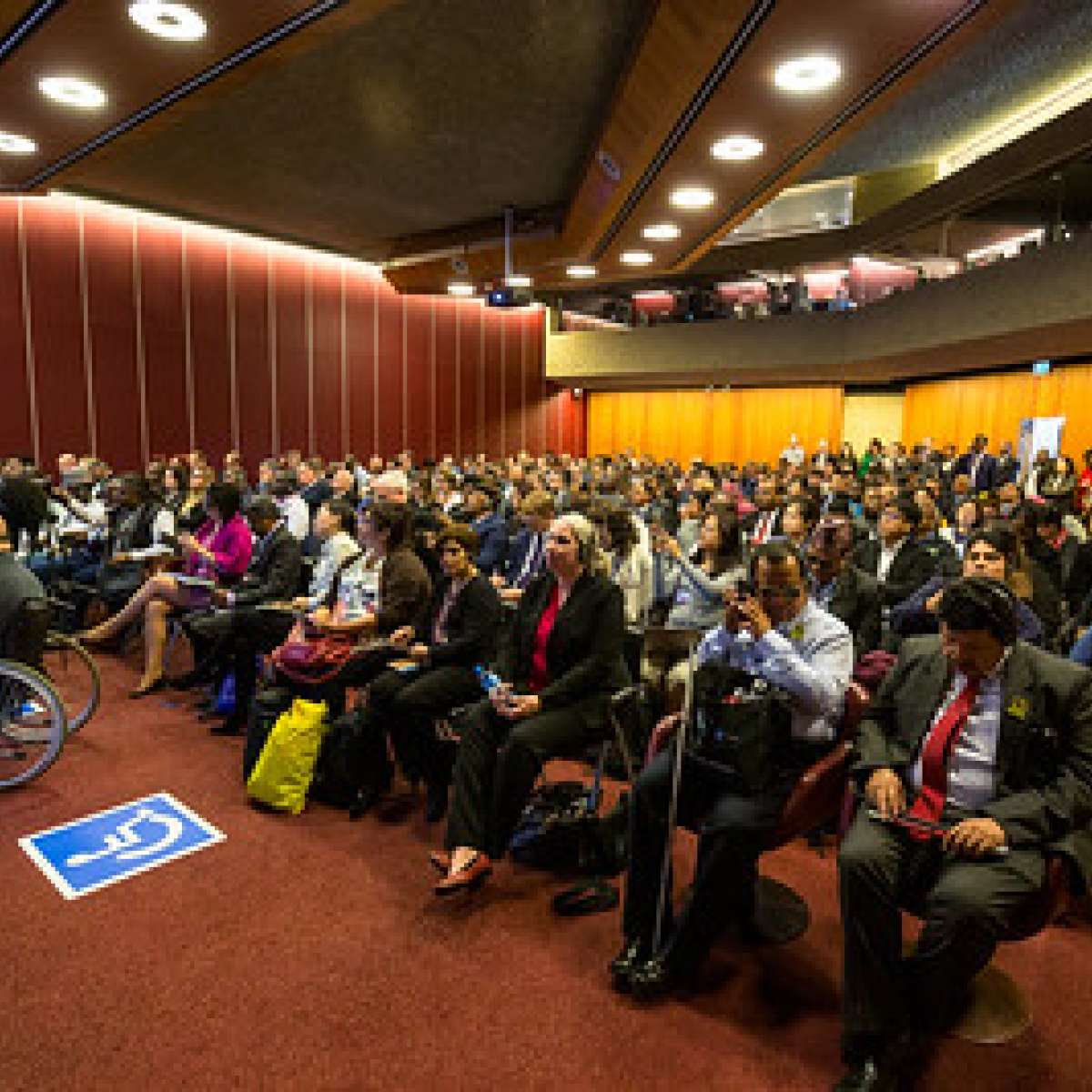
Video resources
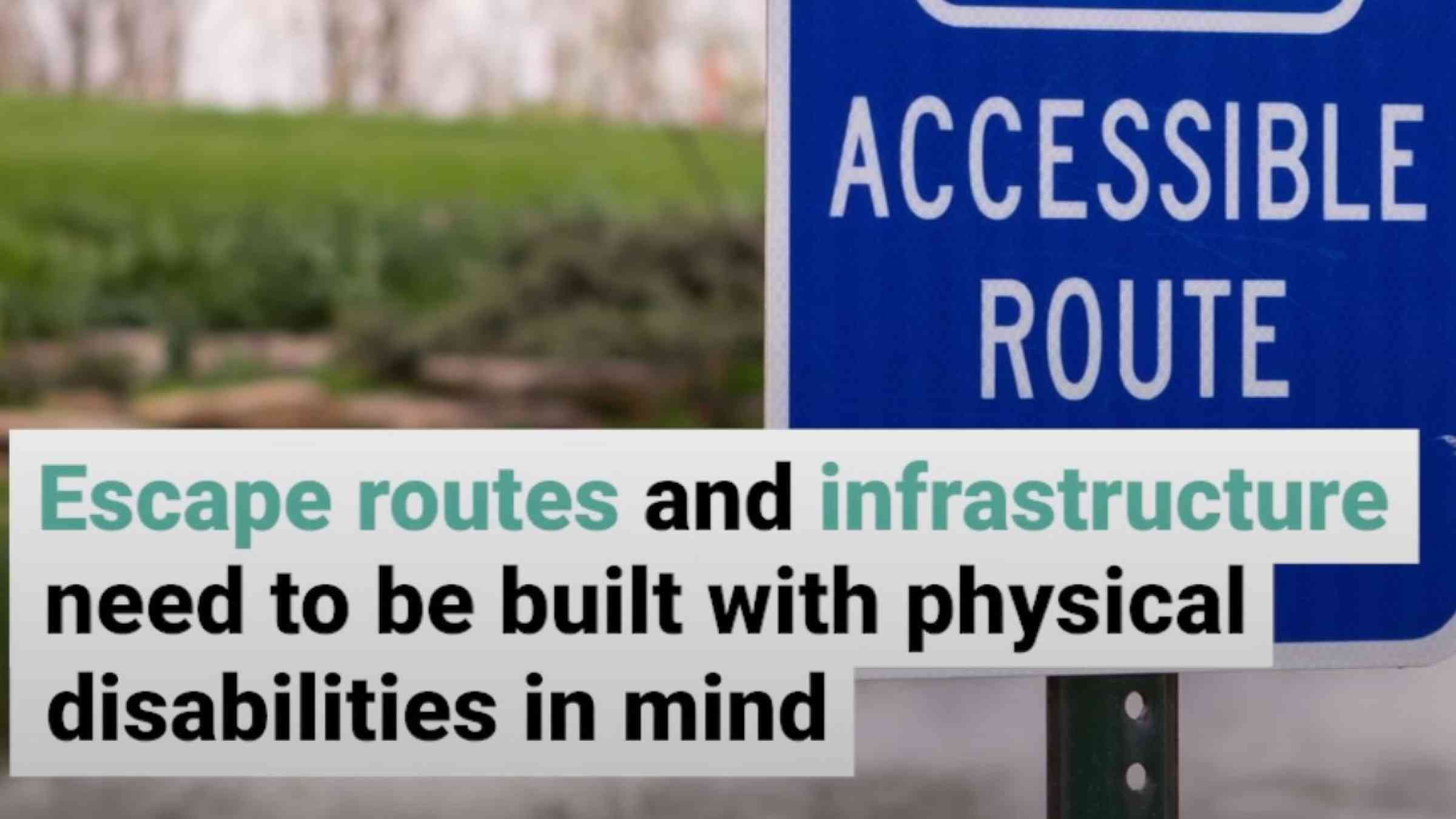

Related and further reading
